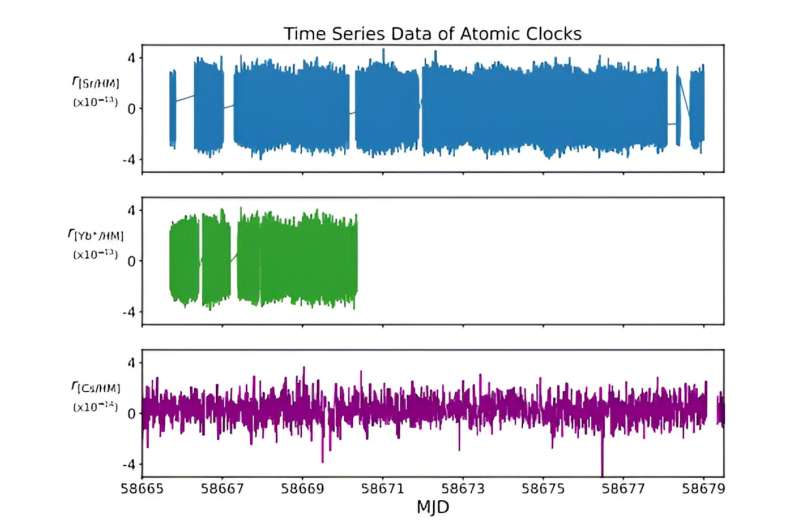September 4, 2023 report
This article has been reviewed according to Science X's editorial process and policies. Editors have highlighted the following attributes while ensuring the content's credibility:
fact-checked
peer-reviewed publication
trusted source
proofread
Using an atomic clock to help find evidence of dark matter

A combined team of physicists from the University of Sussex and the National Physical Laboratory, both in the U.K., has been designing experiments to identify ultra-light dark matter particles. In their paper published in the open-access New Journal of Physics, the group describes how they are attempting to use the high precision of atomic clocks to detect ultra-light dark matter particle "kicks" that would lead to time variations and, in so doing, would show evidence of dark matter.
Currently, dark matter is not something that has been shown to exist—instead it is more of a placeholder that has been created to explain observations of deviations from the Standard Model of physics—like certain gravitational effects on galaxies. Since its development as a theory back in the early 1930s, physicists around the world have been developing theories and experiments to prove that it exists.
Sadly, despite a lot of time and effort, no such proof has been found. In this new effort, the team in the U.K. is working on a novel way to add credence to dark matter theories—using atomic clocks to detect ultra-light dark matter particles.
Atomic clocks achieve their precision by taking advantage of the precision inherent in atomic resonance—atoms oscillate between energy states in highly precise ways. The researchers in this new study are hoping to use such precision to identify ultra-light dark matter particles, which as their name implies, are theorized tiny particles that make up dark matter.
The use of an atomic clock to identify them revolves around the idea that atomic clocks could have their precision interfered with slightly, if as theory suggests, ultralight-dark matter particles are able to very weakly interact with regular matter—such as the atoms being used as the basis for an atomic clock. And if such tiny changes to the oscillation frequency of a given atom were to occur, the research team is confident it could be observed, and perhaps measured. If this could be accomplished, scientists would have evidence of dark matter. The next step will be for a team of applied physicists to build an apparatus capable of testing their new ideas.
More information: Nathaniel Sherrill et al, Analysis of atomic-clock data to constrain variations of fundamental constants, New Journal of Physics (2023). DOI: 10.1088/1367-2630/aceff6. On arXiv: DOI: 10.48550/arxiv.2302.04565
Journal information: arXiv , New Journal of Physics
© 2023 Science X Network





















